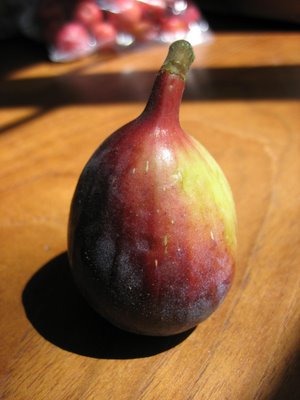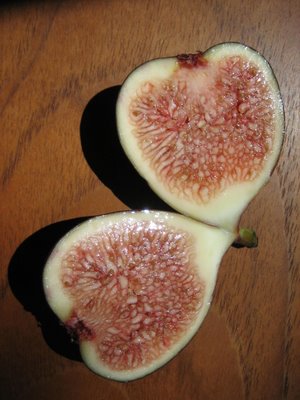How is it that I knit so quickly?
I haven't thought about this too deeply, so probably I can't give a proper answer.
And it isn't as though I hang out with many knitters in the physical world, so I don't really have the opportunity to compare my pace to the pace of others.
Not that I would.
(Or not that I would admit, anyway. I'm getting pretty good at pretending to myself that I'm not competitive in every freaking aspect of my life.)
But I do have three thoughts on the matter.
The first is that, pace aside and speaking only of productivity, I spend quite a lot of
time knitting.
Everyone makes time to do the things they really enjoy doing. Some people spend time gardening, some people cook dinner for their family every night, some people sleep in on the weekends, some people go to temple every day, some people socialize, some people spend whatever time they need to look exquisite every day, some people exercize . . .
Most of those things, I just don't do them.
Or not very much.
I like knitting better.
Knitting is my default activity. If I'm watching the good box, I'm knitting. If I'm avoiding housework, I'm knitting. You get the picture.
If you are knitting all the time, it is hard to avoid being productive.
The second is
practice. If you knit as much and as often as I do, you gain speed. It just sort of happens naturally.
The third, which I am less certain of as a contributing factor, is
technique.
I knit funny.
I learned the basics of knitting years and years ago, watching my Mum. She was busy knitting something to an imminent deadline, and I wouldn't stop bugging her about teaching me to knit.
(I was wee, and what I wanted, I NEEDED. NOW. She must have been awfully frustrated!)
My recollection (which may or may not be accurate) is that she made a deal with me.
She would teach me how to cast on, and after that I could watch her and copy what she was doing as much as I liked, but she wouldn't help me any more than that until she finished her project. No help. No questions. SHUSH and let Mommy knit!
So she taught me the backwards loop cast on, and I guess from watching her and fiddling around a bit, I taught myself some semblance of knit and purl.
Until just two years ago, I thought no one else knitted like me. (Mum might have, but she stopped knitting for a good long while and doesn't really remember how she used to do it.)
I found patterns very confusing.
And I found it impossible to talk to others about knitting -- it was like I was speaking some other language.
I could see no difference between k2tog and SSK. I got the same result either way. I could not comprehend what was meant by "knitting through the back loop." How was that any different from normal knitting?
Now, thanks to knitting resources on the web, I know what I am about.
And I know that I am not alone.
How I knit is not particularly common, but it is common enough to have been given a name: Combined or
Combination Knitting.
Knits are done in the same way as in Continental style (working yarn held in the left hand and "picked" through the previous stitch by the right needle).
Purls, though, are accomplished slightly differently. They are also "picked," as in Continental, but the working yarn is wrapped around the right needle in the alternate direction. This requires fewer and smaller moves, and so purls go much faster and more evenly. A drawback (and the source of almost all my knitting confusion) is that the resulting stitch is seated differently on the needle (some would say "twisted"), and this needs to be taken into account when working the next row.
For most applications, and particularly for plain stockinette and for flat ribbing, the combined knitting technique is the most efficient sequence of moves to get the job done.
It is not suited for all purposes, though. I have a hard time with it when working a purl stitch into a previous purl stitch -- e.g., when ribbing in the round or working seed stitch.
But now I know enough about which version of purl is likely to work best in which application (at least for me), and I switch it up accordingly.
Also,
cabling without a needle is very helpful.
Yours,
A.K.
Labels: trivia
 (Gratuitous baby photo.)
(Gratuitous baby photo.)












